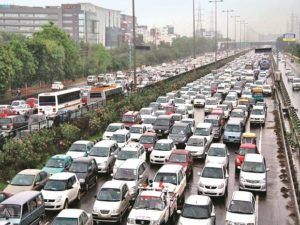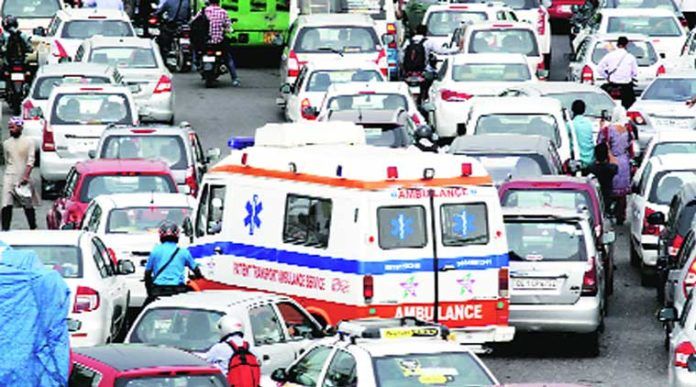A team of 2nd-year electronics and communication engineering students at India’s Chandigarh University have developed a self-powering smart traffic control system for future use in the country’s smart cities.
Concerned about increasing traffic congestion on city roads, fuel wastage at traffic lights and the loss of lives due to emergency service vehicles getting stuck in traffic jams, the team of three students have developed an unique intelligent sensor-based smart traffic control system that will not only help to give passage to ambulances and fire trucks, but will also help save electricity by generating power that will be used to run the traffic lights. “According to statistics 20% of the patients needing emergency treatment die on their way to hospitals every year because of traffic delays and uncooperative motorists in India,” said Raj Aryan, one of the team members who, along with Kashish Jangid and Himanshu Soni, developed the new system.
Based on the installation of Piezoelectric Sensors that have the ability to convert pressure into electrical voltage at all the intersections where vehicles stop due to traffic lights, the smart traffic control system will calculate the length of traffic queue on all the sides of the crossing. The sensor will send instructions to the microcontroller that manages the intersection’s traffic lights based on the length of the waiting queue. The signal will go green for variable times to different sections of waiting traffic depending upon the queue length. The system will also help in changing the automatic pre-set signal timings in peak and non-peak hours.
One of the interesting features of the proposed system is that as well as its detection capabilities, the piezoelectric sensor will also be able to generate power from the weight of the vehicles that are stopped at the traffic signals. The sensor-generated power will be used to provide electricity for the traffic signals at the intersection, removing the requirement for electric grid connections to them.
 Another feature of the smart and intelligent traffic control system would be that it will sense the presence of emergency service vehicles through RF (Radio Frequency) Transmitters and Receivers installed in the system. Using the alarm sound detection system generated by ambulances and fire trucks, the RF Receiver will send signals to the traffic lights’ microcontroller instructing them to go green while keeping the other signals red. The RF Receiver can detect the sound frequency of an emergency vehicle siren within a range of 328-656 feet (100-200m), prioritizing the traffic flow at the crossing from the side where there they may be stuck due to red signals.
Another feature of the smart and intelligent traffic control system would be that it will sense the presence of emergency service vehicles through RF (Radio Frequency) Transmitters and Receivers installed in the system. Using the alarm sound detection system generated by ambulances and fire trucks, the RF Receiver will send signals to the traffic lights’ microcontroller instructing them to go green while keeping the other signals red. The RF Receiver can detect the sound frequency of an emergency vehicle siren within a range of 328-656 feet (100-200m), prioritizing the traffic flow at the crossing from the side where there they may be stuck due to red signals.
The Chandigarh University students have already filed a patent for their smart traffic control system with India’s patent agency, with the team continuing to develop the technology for future deployment across the country.





